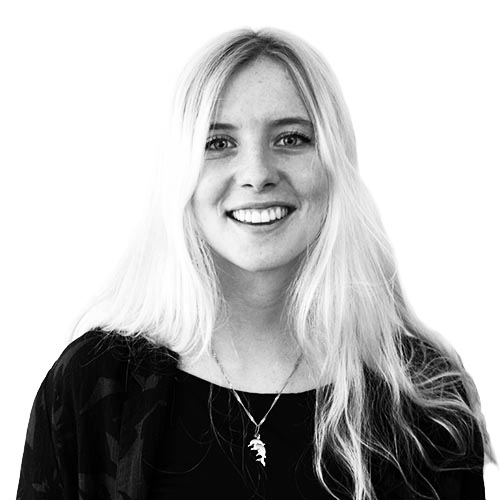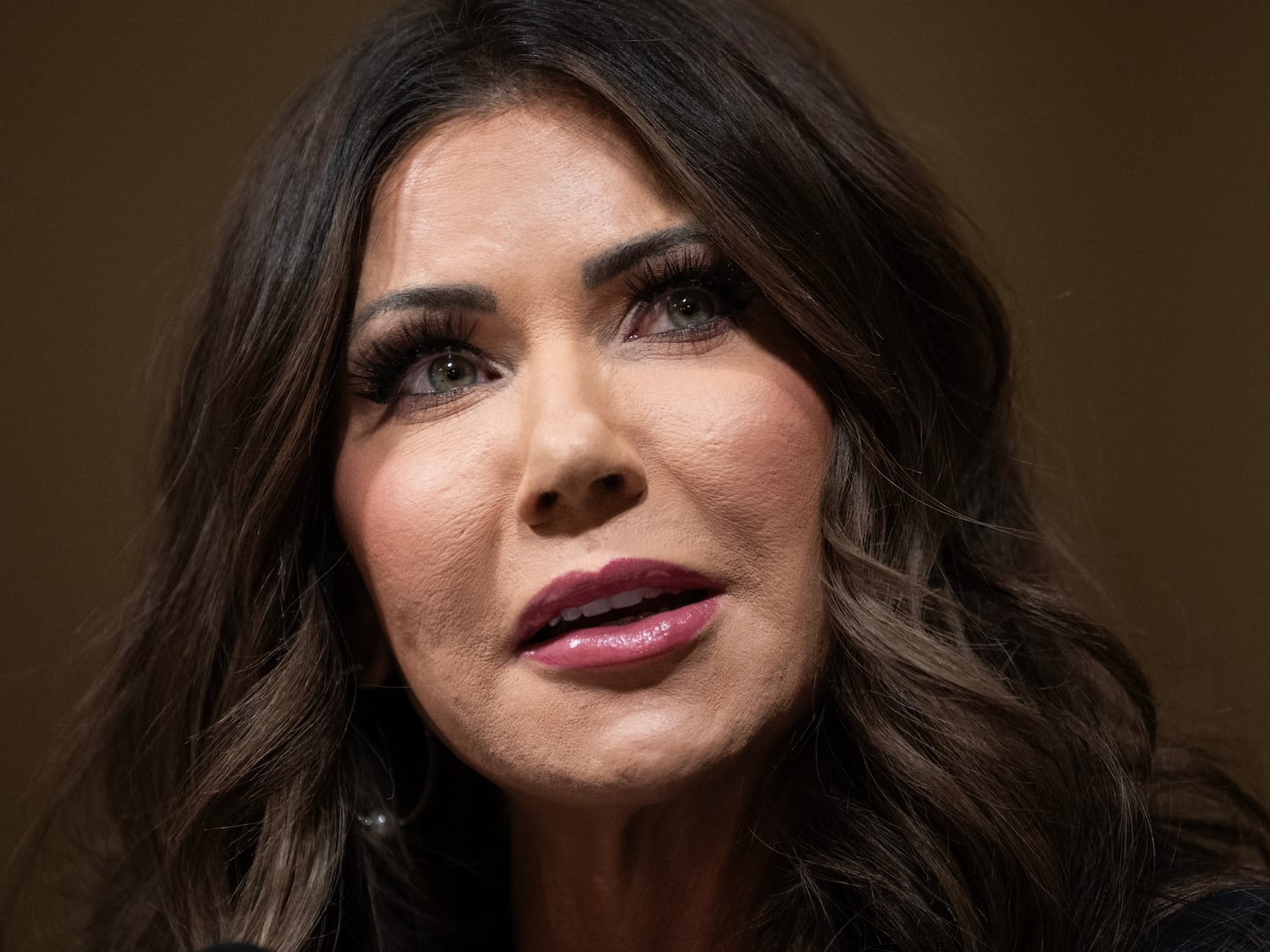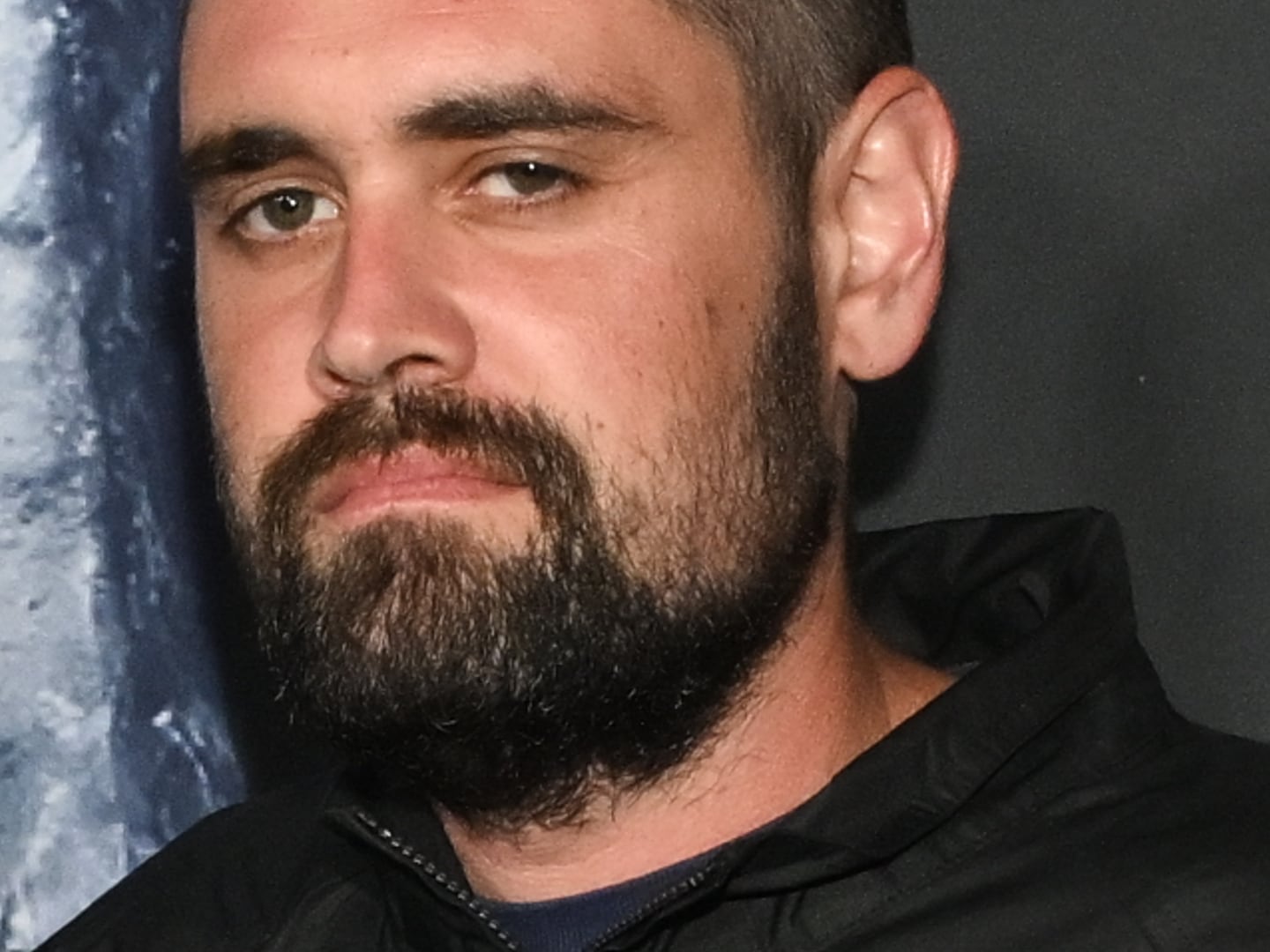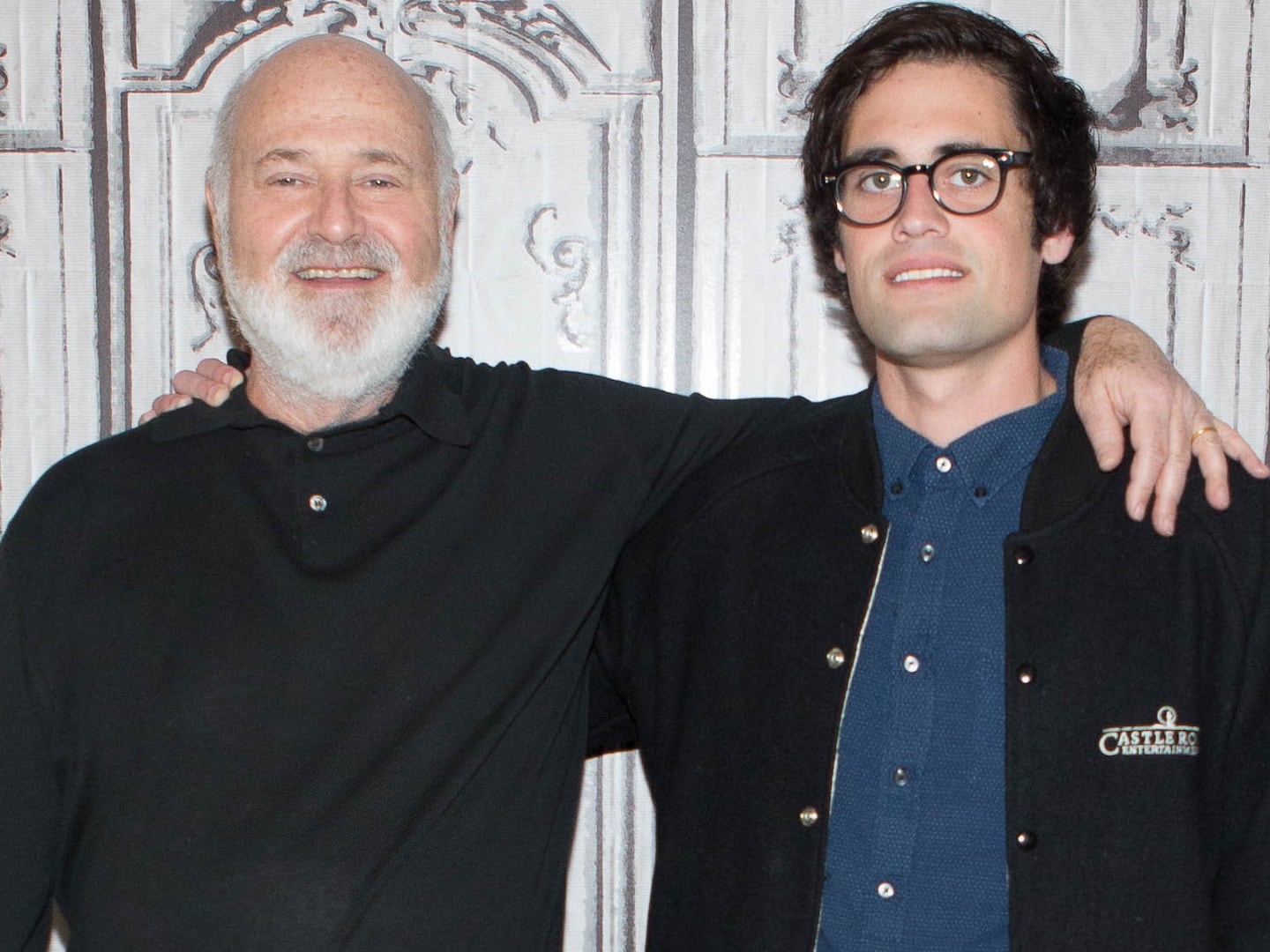In the summer of 1973, Conrad Romo, a 19-year-old boy from L.A. whose Catholic upbringing had been derailed by books like Hermann Hesse’s Siddartha and John G. Neihardt’s Black Elk Speaks—anything that “spoke of more than just this world”—turned on the TV and watched an advertisement for a new religion called “Scientology.”
The ad was catchy–a tight one-minute clip with a jingle from ‘70s radiostar Edward Bear and the vague promise of deeper meaning. When a phone number flashed across the screen, Romo took note.
“I’m a sucker for a little ad,” Romo, now a grey-haired Buddhist with a goatee, told The Daily Beast. When he phoned the line to hear more, the boy spoke to a woman who called herself “Spanky.” Later, he would recognize her as Spanky Taylor, a spokesperson for Scientology’s publicity arm, Axioms Productions, and John Travolta’s personal “auditor”—jargon for a kind of counselor. But in the moment, he thought she seemed cool. “Spanky had a really sexy voice,” Romo said, laughing. “I was intrigued.”
Forty-five years later, Conrad Romo would point to that advertisement as the genesis of a 14-year devotion to the controversial religious group. In some ways, Romo’s story of Scientology resembles so many of the survivor tales told by ex-members: he got seduced, spent years of his life and thousands of dollars on Scientology, and then “woke up,” confused and lonely, sometime in the late 1980s.
But in recent interviews with The Daily Beast, Romo and several other former members explained another aspect of scientologist life—one rarely reported on in the documentaries or chart-busting tell-alls—a niche industry that employed countless hopeful converts around Los Angeles and San Francisco for nearly a decade: selling meat.
For four years, in the name of Scientology and its charismatic, sci-fi-writing leader, L. Ron Hubbard, Romo drove a climate-controlled truck around greater Los Angeles, parked it outside food stamp stores, and hawked overpriced steaks to anyone who passed by.
When Romo spoke to Spanky, she told him to come down to a place on L.A.’s 8th Street, near MacArthur Park. It was a Friday night around 10 p.m., just after a lecture had ended. Romo was initially turned off, he recalled. The area was kind of seedy, he said, and Spanky hadn’t mentioned anything about a “church,” which sounded stodgy and Catholic. But Romo introduced himself. He signed in. A member silently led him to a private room.
In the room, Romo watched a short video of L. Ron Hubbard laying out the group’s basic tenets, and flipped through a copy of Hubbard’s best-selling text, Dianetics. The member asked him to buy the book, Romo recalled. “I said no and he left.”
Romo might have just walked out then and there, cult and meat-free. But as he was leaving, a bunch of members invited him to a party. He piled into a car with the group of good-looking young people. They were talkative and the party was fun, Romo thought, even though, as a rule, scientologists stay pretty straight-edge.
When the night was over, Romo’s new friends had convinced him to sign up for the first Scientology course, “Communications.” Hubbard allegedly borrowed many of his practices from other religions and Romo said the first course seemed lifted straight from Zen Buddhism. “It was a form of meditation where you just sit, doing nothing, being still,” he said. “As I recall, we would sit facing someone else. You just sit three feet apart from each other and you don’t blink. You’re just there.”
The class only cost $30 or $35, Romo said, and after he tried the first session, it seemed worth every penny: “I felt something kind of shift in me.” He signed up for the next class immediately after. The price was slightly higher, although still reasonable–but soon, the prices “just got crazier and crazier.”
Unlike most major religions, Scientology requires significant financial contributions from its members, by way of these courses and an alternative kind of therapy they call “auditing.” After the first course, students are encouraged to enroll immediately in the next level, so that they can begin climbing what members call “the Bridge,” a rising scale that promises to assist students to “go clear,” or reach the Scientology equivalent of Nirvana.
As in Romo’s experience, the first sessions for these practices are always the cheapest–some are now offered free online–but with each additional course, the prices soar.
“The whole thing is money,” said Tory Christman, a former scientologist whose ex-husband worked in the meat-selling circuit. “It’s not a religion. It’s a business. Think of it as a triangle–the higher up you get, the more pressure to spend more. You always have to buy the next thing.”
The mounting financial pressure on scientologists like Romo and Christman often forced them to find supplementary income, birthing a string of micro-markets that were dominated by members of the cult looking to payroll their way to “total freedom.”
In a statement to The Daily Beast, a representative from the Church of Scientology denied any official relationship with the pursuits of their membership.“Scientologists, like individuals from many religions, engage in a wide variety of professions,” a spokeswoman wrote. “Scientologists come from all walks of life and from just about every imaginable occupation.”
Even without official endorsements, however, insular Scientology markets sprouted up as early as the 1970’s, producing pockets of salesmen with specialties in pretzels, gold, black velvet paintings, aluminum etchings, Olympic flag tschochkies, chimney sweeping services, a weight loss drink called Slendernow, several different multi-level marketing commodities (including the billion-dollar nutrition business Herbalife), insurance, and–in Romo’s case–wholesale pork chops, burger patties and beef byproducts.
Only months into his newfound lifestyle, Romo said, he was already strapped for cash. He was working in a factory and hated it. He quit his job when he saw an ad at some Scientology event for a gig in sales. His first go at selling began with what struck him as an unlikely product: pretzels.
The company was run by a few scientologists from New York. Pretzel stands were still largely an East Coast enterprise, and they were a novelty in Los Angeles. The scientologists would park their carts by department stores or outside the Rose Bowl and pass out hot pretzels, earning seven or eight cents for each piece sold. In a single day, Romo made somewhere around $120.
Soon, he graduated to bigger foods. He heard about a wholesale meat distributor called Mr. Sirloin in San Francisco, which was hiring young scientologists to help with sales. Another company called Tully Premium Meats had started a similar practice in Gardena, a city in southwest L.A. County, and closer to where Romo lived.
In meat sales, Romo would still make commission. But the products cost more than pretzels, so his daily earnings would spike. When he showed up for training, Romo met one of the owners, a tall, charismatic redhead named Brian Tully.
In a statement to The Daily Beast, a representative from the Church of Scientology denied any association with Tully. (“Mr. Tully of Tully Meats was expelled from the Church decades ago,” she wrote, adding, “We have no records of a Mr. Sirloin,” mistaking the name of a meat vendor for a person). But in the late 1970s, Tully was still very much part of the Church, and so were most of his employees, both Romo and Christman claimed.
Tully gave his trainees a long presentation on their business plan: salesmen would rent a freezer truck on credit, then buy some dry ice and a week’s supply of meat. They would patrol neighborhoods, knock on doors, and hope to make a deal.
In training, they practiced their pitches: “Hi, my name is Conrad and I’m with Tully Meats,” Romo remembered. “We’re a restaurant and wholesale delivery service and I got some steaks out in the truck that thick.” They would hold their fingers up two or three inches, to show their size. “We’d make them seem far bigger than the steaks that we had. Then we’d say, ‘Wait here!’ We were supposed to do it with a lot of enthusiasm,” Romo told The Daily Beast.
Tully’s training was short—an hour, at most—but Romo studied up on sales strategy in his free time. He hadn’t gone to college, so he decided to make selling his career. “I found I had a knack for sales that I didn’t realize I had,” he said, “and I liked that.”
Senior staff members of Scientology studied sales as part of their recruitment work, and Romo began to learn from them. He read a book called Big League Sales Closing Techniques, written in 1971 by a guy named Les Dane. Dane wasn’t a scientologist, but after the book came out, Hubbard made it required reading for all “registrars”—the scientology staff members responsible for signing people up.
“It’s funny to hear [President Donald] Trump using the term ‘Big League,’” Romo said, referring to an incident in 2016, when Trump, then a presidential candidate, promised to speed up the immigration process “big league,” meaning a lot. “Back then, that was the Scientology handbook.”
Scientology salesmen also read Sun Tzu’s The Art of War, the ancient Chinese military treatise written in the fifth century B.C.E., and Romo said its lessons were widespread throughout the meat-sales business.
“Appear weak when you are strong, and strong when you are weak,” Romo said, quoting one of Tzu’s maxims. When he was pitching a product, he would often play dumb, letting the buyer think they were the ones scamming him.
“Sales was all about reaching and withdrawing. When you’re talking, you’re reaching. And when you’re listening, you’re withdrawing,” Romo explained. “We would physically lean forward and move back. We would knock on the door and say, ‘Hey, I just talked to your neighbor and they got a bunch of these, and we thought you might want some of them too. I don’t know.’”
Then, the salesmen would go quiet, Romo said, leaving the customers to fill in the silence. “We would put on this face like we were so dumb, and say nothing. Always, they would say, ‘What are they?’ but we would act like we hadn’t heard them. We would say, ‘scuse me’? And they would say, ‘What are they? The second time, they would almost always have a smile on their face, like they were talking to the stupidest person in the world.”
The business was something of a scam, in part because meat was a risky, high-pressure product. “It’s a perishable item, so you really had to hustle. Otherwise you winded up having to either toss it or eat it,” Romo said.
To make sure they made back their investment, the salesmen would target poor people. “You weren’t going to sell meat in Beverly Hills,” Romo explained. They would tour low-income neighborhoods and housing projects, or stake out food stamp stores.
One of Romo’s co-workers, a man named Larry Wollersheim (who would later sue Scientology for $86 million in a case that stretched out for 22 years, then one of the longest cases in California history), even rented a store front right across from a food stamp office, and hired stringers to pass out flyers.
The supervisors at Tully Premium Meats seemed to think that people on food stamps would more readily spend their “free cash” than other potential patrons would spend non-food-stamp money, although little research bears this out. It was true, however, that parking outside a food stamp office provided the scientologists with a steady stream of people ready to buy ingredients.
At the time, Romo didn’t think the meat-racket was a rip-off. He often ate the burgers himself or sold the extras to his family. But he did note that the products were significantly marked up from similar meats at major grocery stores. “If you did the math, no, it wasn’t a great deal,” he said. “But we needed to eat too.”
Eventually, the meat turned out to be more of a scam than Romo knew. Nearly ten years later, according to a 1988 Los Angeles Times article, several Tully executives pleaded guilty to charges that they had lied about their ingredients, adding chicken gizzards to their hamburgers, and passing them off as pure beef. One of the defendants faced up to a year in jail, and another fought a fine of up to $100,000.
Most of the meat sellers were scientologists, but the distributors also hired locals. Sam Quinones, an L.A. Times journalist who wrote about a woman named Leona Logan, the mastermind behind a similar racket in Clearwater, Florida (where each year she sold over $1 million worth of black velvet paintings to cover training costs), said he worked for one of the meat suppliers in the late ‘70s.
“They had this chief office with refrigeration and all that right across the mall from the food stamp office. My job was to give these people flyers to get them to buy pork chops and stuff like that,” he told The Daily Beast. “But it was weird. I remember [the scientologists] having a long conversation amongst themselves, and thinking, ‘I want to go work. I don’t want to sit around talking about whatever weird stuff they were talking about.’ It was complete gibberish. Right there, I was like, maybe I should go.”
He quit the next day. But Romo stuck with the job for years, until his partner Larry Wollersheim convinced him to join him in a new enterprise: itinerant art dealer.
“They were these sh*tty, postcard size, four-by-six kind of things. They were foil, and when you moved them a little bit, they kind of caught the light and had the effect of movement,” he said. “We would have these things framed and matted. I went on the road for almost a year to Denver, Houston, Dallas, Chicago. We would knock on doors. We would recruit people and train people. We would leave an office running and we would go to the next city.”
Then, in 1986, L. Ron Hubbard died of a stroke, and Romo’s faith in Scientology started to waver. In a wild power grab to takeover Hubbard’s seat, the Church’s current leader David Miscavige declared another top scientologist, David Mayo, a “suppressive person”—the Scientology version of ex-communication.
“It was really mind-blowing. It was like, wait a minute, how could he be declared a suppressive?” Romo said. “Scientology claims that 2 percent of people on the planet are these antisocial types that would be called a ‘suppressive.’ But here was Hubbard’s right-hand man. How could Hubbard not have seen that?”
Within six months, he had stopped going to classes and left his belief system, his friends, and his extensive sales career behind. Now, decades later, when the semi-retired Zen Buddhist can finally speak about his old religion without “shaking and sweating,” he says the sales lessons he learned were similar to the very recruitment techniques that brought him to Scientology.
“Oh yeah,” he said. “It’s directing attention to where you want it to be. It’s not taking no for an answer. It’s sheer manipulation.”






